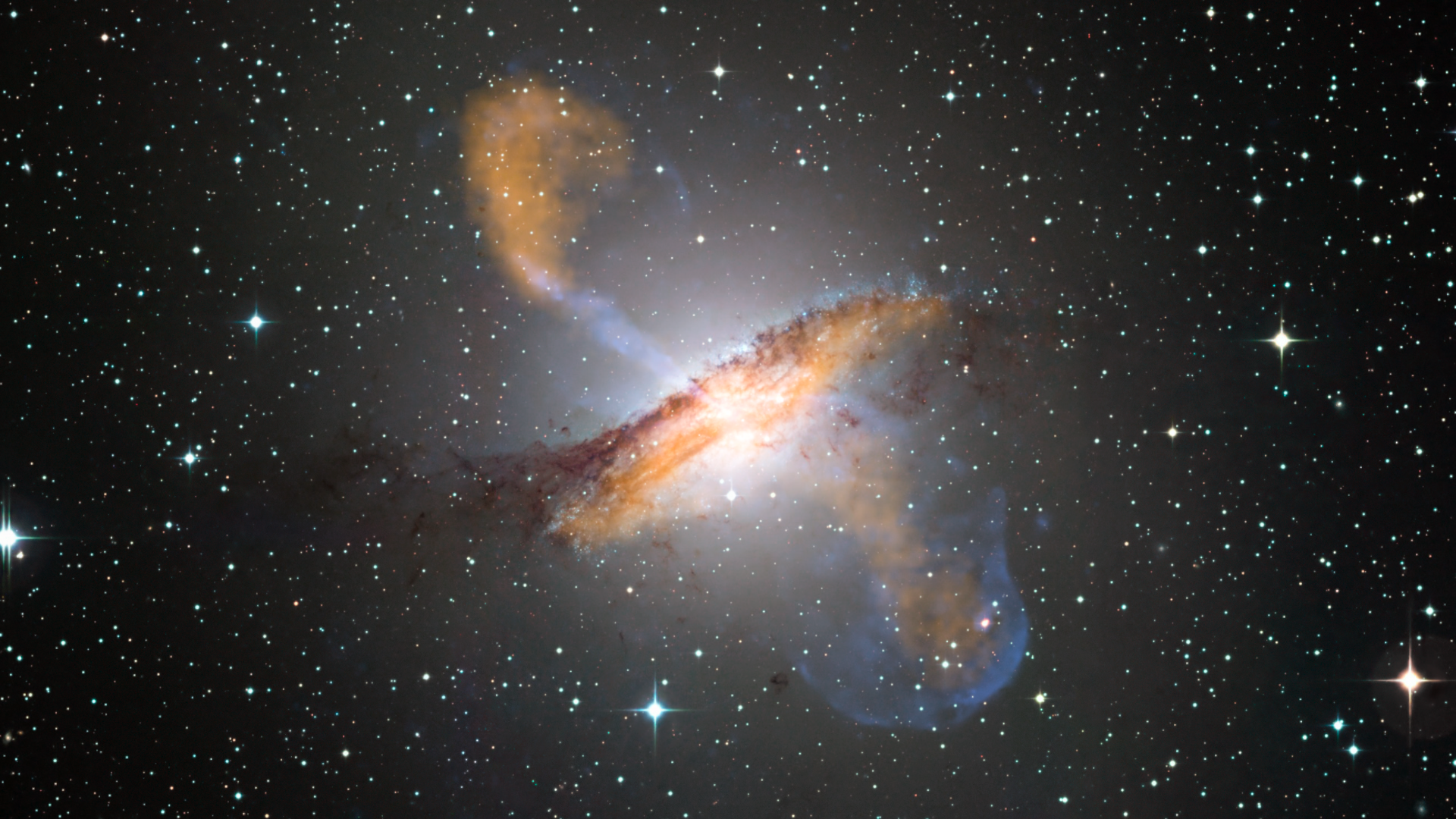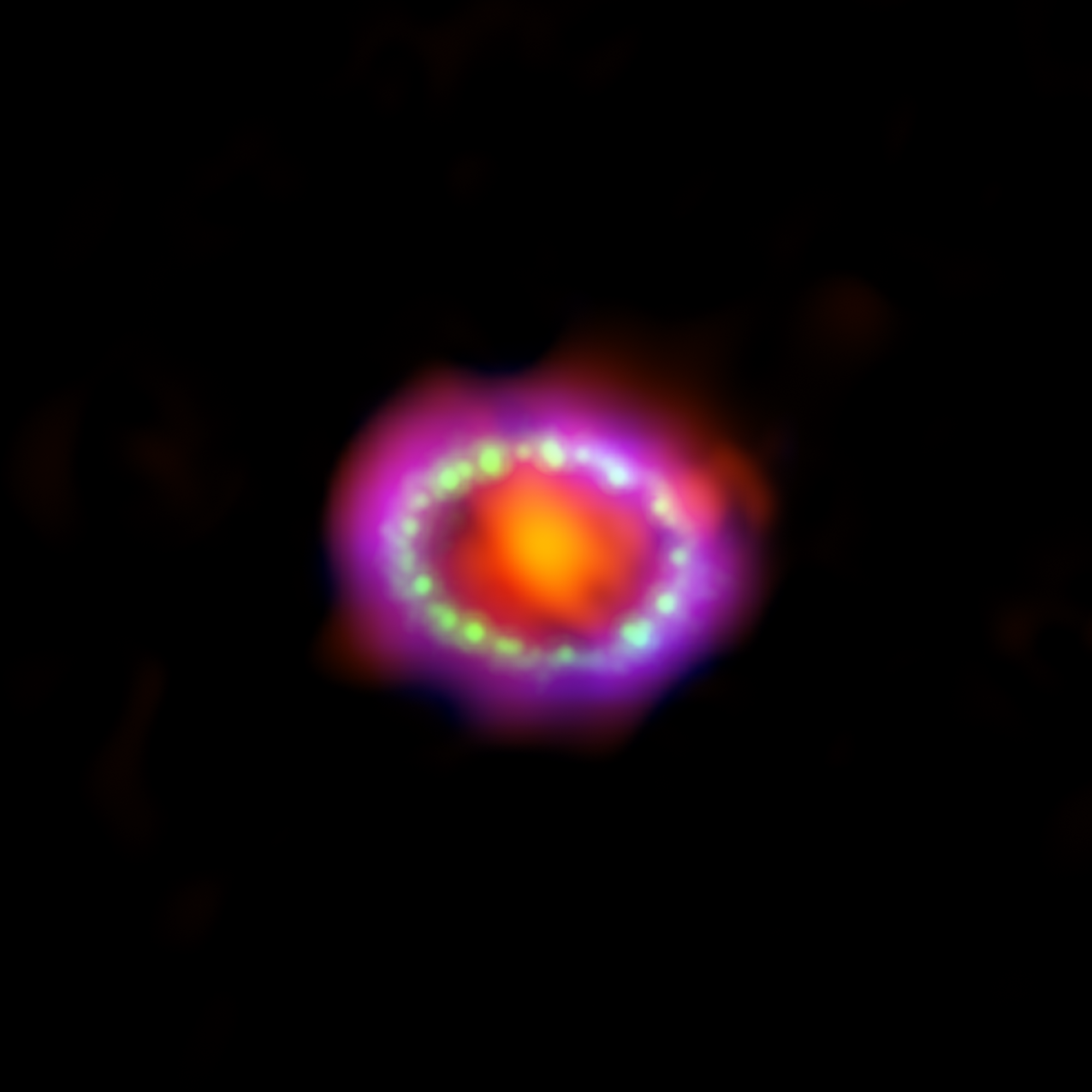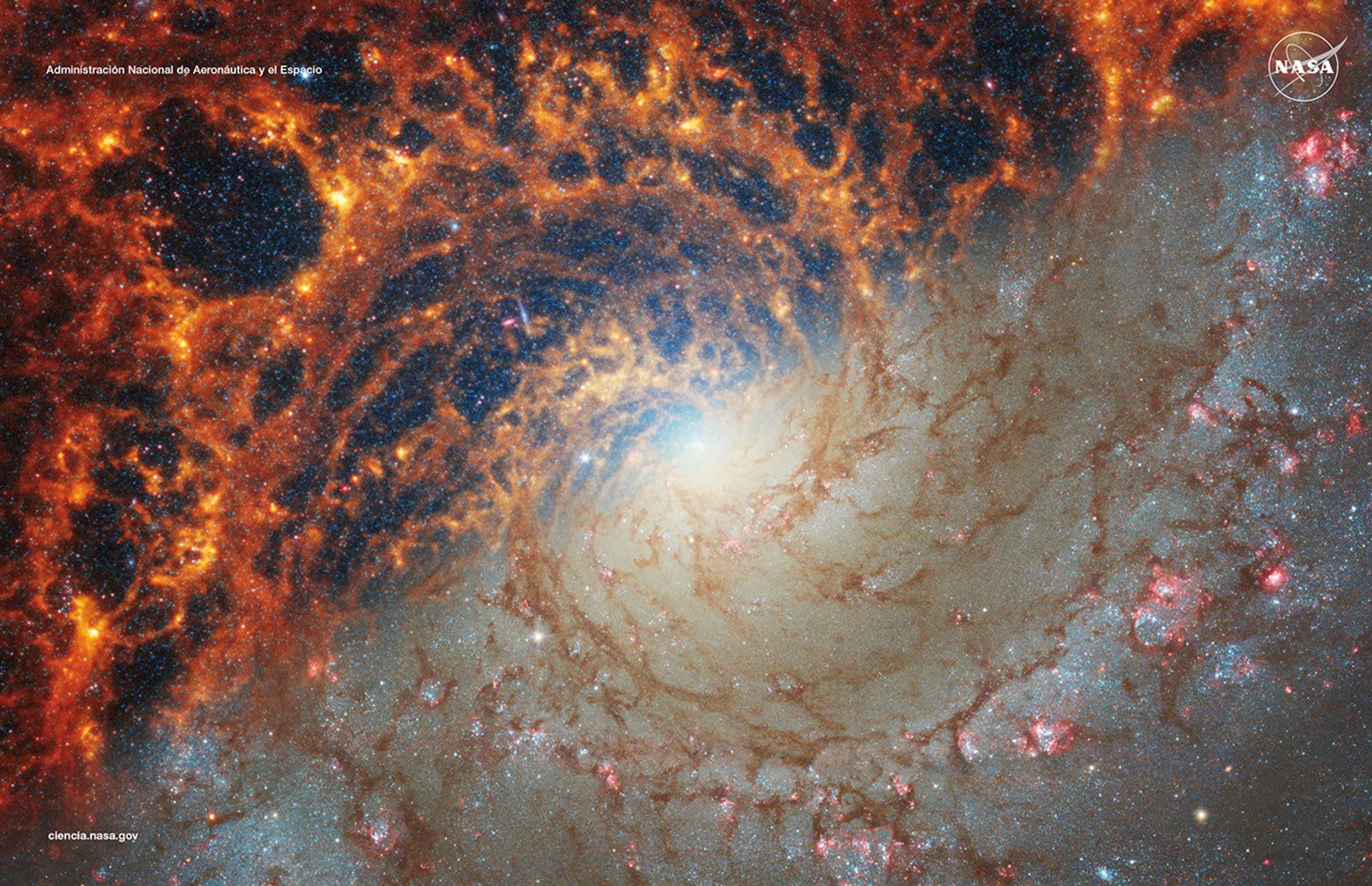


TDAMM Workshop
NASA invites US and international members of the ground and space science community and of the astronomy and physics communities to attend the workshop and contribute to its final product, a publicly available report with findings for the NASA Headquarters Astrophysics Division.
This workshop is strictly on science only and we are steering away from proposed missions, focusing instead on current and already approved missions and facilities. NASA needs the science information before we can all start planning for missions. Contributions highlighting proposed missions are not solicited.
Location
Annapolis, Maryland
Dates
22-24 August 2022
Community
Physics of the Cosmos
Type
Workshop
Prioritizing the Science
Rationale
The 2020 Astrophysics Decadal Survey identified TDAMM as the top space priority of the sustaining activities for the future decades, recognizing breakthrough science in the last several years and setting expectations for the future. One of the primary recommendations of the Decadal Survey was to address outstanding science questions, and the need for coordination of the various stakeholders from the ground and space, astronomy, and physics communities. It is first necessary to hone in on the most compelling scientific questions that need to be addressed, and the priority of those questions in order to plan for future activities for technology investments, mission concepts, and infrastructure. To this end, participation of all stakeholders is necessary. The workshop results will assist NASA with next steps for the formulation of a plan for enabling the Astro 2020 recommendation to “sustain the necessary suite of space-based electromagnetic capabilities required to study transient and time-variable phenomena, and to follow-up multi-messenger events.”
Example questions the workshop will address include:
- What are or will be the most pressing scientific questions for TDAMM in the next several years?
- Which capabilities (top level) are needed to address them?
- How well does the current mission fleet address them?
- Which avenues of inquiry will be most ripe for discovery in the next few years?
- What collaboration between the ground and space can be done to maximize the science?
Format of the Workshop
The workshop will be conducted in person in the Annapolis, MD, area, with in-person and virtual participation. Speakers should plan to attend in person if possible, but remote presentations will also be arranged when needed.
Organizers
Science Organizing Committee
S. Gezari (co-Chair), R. Sambruna (co-Chair), J. Andrews, M. Branchesi, K. Breivik, S. Burke-Spolaor, B. Cenko, A. Franckowiak, M. Kasliwal, R. Margutti, B. Metzger, G. Nelemans, S. Nissanke, E. Ramirez-Ruiz, A. Romero-Wolf, P. Whitelock, C. Wilson-hodge
Local Organizing Committee
C. Barclay (Chair), S. Clark, M. Morrow, S. Gezari, R. Caputo, R. Sambruna, J. Slutsky
Invited Speakers
E. Aydi, I. Bartos, A. Corsi, K. De, A. Ho, E. Kara, C. Kilpatrick, K. Kremer, A. Lien, T. Liu, K. Maguire, E. Rossi, M. Santander, S. Scaringi, S. van Velzen
Agenda
The meeting will be held over 3 full days and will feature plenary sessions and parallel sessions. Every day, there will be up to 4 parallel sessions distributed in the morning and afternoon. On the last day, an outline of the report will be drafted with the final conclusions of the deliberations and writing assignments made.
Monday
| 8:15AM | 9:00AM | Registration | Registration | |
| 9:00AM | 9:45AM | Plenary Session Kickoff: Suvi Gezari Keynote Speaker Mark Clampin Program Scientist: Valerie Connaughton | ||
| 9:45AM | 10:00AM | Jetted Transients-SMBH I Chairs: Gezari, Franckowiak Room B/C | Explosive Transients-WD Chairs: Cenko, Andrews Room A | Non-Terminal Sources-Other Romero-Wolf, Burke-Spolaor Room F |
| 10:00AM | 10:45AM | Invited: Marcos Santander | Invited: Kate Maguire | Invited: Imre Bartos |
| 10:45AM | 11:00AM | Contributed: Tiffany Lewis | Contributed: Benjamin Rose | Contributed: Henrike Fleischhack |
| 11:00AM | 11:15AM | Contributed: Haocheng Zhang | Contributed: Abigail Polin | Discussion |
| 11:15AM | 12:00Noon | Discussion | Discussion | |
| 12:00Noon | 1:30 PM | Lunch (on your own) | ||
| Explosive-Transients-NS/BH Chairs: Andrews, Franckowiak Room B/C | Non-Terminal Sources-WD Chairs: Nelemans, Breivik Room A | Jetted Transients-Other Chairs: Margutti, Metzger Room F | ||
| 1:30PM | 2:15PM | Invited: Charlie Kilpatrick | Invited: Simone Scaringi | Invited: Anna Ho |
| 2:15PM | 2:30PM | Contributed: Ori Fox | Contributed: Kevin Burdge | Contributed: Bei Zhou |
| 2:30PM | 2:45PM | Contributed: Chris Fryer | Contributed: Rafael Martínez-Galarza | Discussion |
| 2:45PM | 300PM | Contributed: Avishay Gal-Yam | Discussion | Merger-Driven Transients-Other II Room F Invited: Elias Aydi |
| 3:00 PM | 3:30PM | Discussion | ||
| 3:30PM | 3:45PM | Break (Water/Coffee available) | ||
| Non-Terminal Sources-SMBH Chairs:Burke-Spolaor, Gezari Room B/C | Jetted Transients-NS/BH Chairs: Wilson-Hodge, Cenko Room A | Merger-Driven Transients-Other II Chairs: Kasliwal, Metzger Room F | ||
| 3:45PM | 4:00PM | Invited: Tingting Liu | Invited: Amy Lien | Contributed: Navin Sridhar |
| 4:00PM | 4:30PM | Discussion | ||
| 4:30PM | 4:45PM | Contributed: Caitlin Witt | Contributed: Eric Burns | Merger-Driven Transients-WD Chairs: Gijs Nelemans, Breivik Room F Invited: Kyle Kremer |
| 4:45PM | 5:00PM | Contributed: Scott Noble | Contributed: Taya Govreen-Segal | |
| 5:00PM | 5:15PM | Contributed: Daniel Stern | Contributed: James Rhoads | |
| 5:15PM | 5:30PM | Discussion | Discussion | Contributed: Yossef Zenati |
| 5:30PM | 6:00PM | Discussion | ||
| Small Group Dinners |
Tuesday
| Small group meetings, self organized | ||||
| 9:00AM | 9:45AM | Break (Water/Coffee available) | ||
| Jetted Transients-SMBH II Chairs: Gezari, Franckowiak Room A | Merger-Driven Transients-NS/BH Chairs: Kasliwal, Nissanke | Explosive Transients- Other Chairs: Burke-Spolaor, Margutti Room F | ||
| 10:00AM | 10:45AM | Invited: Sjoert van Velzen | Invited: Alessandra Corsi | Invited: Shami Chatterjee |
| 10:45AM | 11;00AM | Contributed: Yvette Cendes | Contributed: Samuele Ronchini | Contributed: W. Niel Brandt |
| 11:00AM | 11:15AM | Contributed: Robert Stein | Contributed: Eran Ofek | Contributed: Walid Majid |
| 11:15AM | 12:00PM | Discussion | Discussion | Discussion |
| 12:00PM | 1:30PM | Lunch (On your own) | ||
| Merger-Driven Transients- SMBH Chairs: Burke-Spolaor, Slutsky Room A | Merger-Driven Transients-Other I Chairs: Kasliwal, Metzger Room B/C | Non-Terminal Sources-NS/BH Ramirez-Ruiz, Wilson-Hodge Room F | ||
| 1:30PM | 2:15PM | Invited: Elena Rossi | Invited: Kishalay De | Invited: Erin Kara |
| 2:15PM | 2:30PM | Contributed: Jeremy Schnittman | Contributed: Yadira Gaibor | Contributed: Maria Drout |
| 2:30PM | 2:45PM | Contributed: Krista Lynne Smith | Discussion | Contributed: Thomas Maccarone |
| 2:45PM | 3:30PM | Discussion | Discussion | |
| 3:30PM | 3:45PM | End of Daily Sessions | ||
| 3:45PM | 4:30PM | Editing of System Reports by Session Chairs |
Wednesday
| 9:00AM | 11:00AM | Infrastructure Panel |
| Short individual introductions GCN - Judy Racusin HEASARC - Alan Smale MAST - Josh Peak NOIRLab - Janice Lee DSN - Joe Lazio SpaceComm - Chris Roberts IPAC - George Helou | ||
| 11:00AM | 11:15AM | Break (Water/Coffee available) |
| 11:15AM | 12:00PM | Non-Terminal Sources Reports WD: Nelemans SMBH: Burke-Spolaor NSBH: Ramirez-Ruiz Other: Romero-Wolf |
| 12:00PM | 1:30PM | Lunch (On your own) |
| 1:30PM | 3:30PM | Merger-Driven Transients Reports SMBH: Slutsky NSBH: Branchesi/Nissanke Other: Kasliwal Jetted/ExplosiveTransients Reports Other/Jetted: Metzger SMBH/Jetted: Franckowiak NSBH/Jetted: Wilson-Hodge Explosive Transients Reports WD: Breivik WD/Explosive: Cenko NSBH/Explosive: Andrews Other/Explosive: Margutti |
| 3:30PM | 4:00PM | Next steps, report outline, writing assignments. |
| 4:00PM | Close Out | |
| ------------------------------------------------------------------------------------------------------------------------ |
Contributed Talks and e-Posters
Each parallel session will feature an invited speaker and contributed talks, selected among submitted abstracts. Note that the talks should be focused on addressing the specific questions of the workshop, and not simply be a presentation of original research in the field. Here is the suggested format for the contributed talks.
Posters will only be accepted in an electronic format. Poster should also conform to the provided format; however, early career scientists are allowed to focus more on their research results. The posters will be made available electronically to all attendants one week before the start of the workshop, to give ample time for reviewing.
Information on the Venue
The location for the TDAMM Workshop to be held August 22 – 24, 2022, is in Annapolis, Maryland. Additional location details below:
Governor Calvert House, Maryland Inn
58 State Circle
Annapolis, MD 21401
410-263-2641
History of Annapolis
There are a limited number of rooms available at a reduced rate. We encourage those who plan to attend this workshop in person to make reservations soon, and at the latest on July 21, 2022. The Maryland Inn has provided a link: NASA Workshop Block. The workshop will include support for virtual attendance for those unable to attend in person.
Additionally, please review and submit the code of conduct prior to attending the workshop. We will update the website with a schedule shortly, and send an email to this list when it's ready. To submit ePosters, please upload a PDF version here.
Even though NASA is pleased to offer participation in this workshop with no registration fees, it is still important to register regardless of whether you are planning to attend in person or virtually. If you have not done so already, please register here.
NASA employees please remember to register participation in NCTS.
Registration
As a result of high interest in attending the TDAMM workshop, we will need to begin using a waitlist for those who are not currently registered as an in-person attendee. You will have the option in the registration form to choose to be on the in-person waiting list or to attend virtually. Anyone who remains on the waiting list as of July 22, will automatically be moved to virtual attendance and will be notified via email. If circumstances change, and you need to switch from in-person to virtual, please contact Mary.A.Morrow@nasa.gov or Stephanie.M.Clark@nasa.gov; this will allow us to offer your space to your colleagues who would like to attend and are on the waiting list.
Please fill out the registration form to register for the workshop.
Abstract Submissions
Abstract submissions will open on Monday, April 11th, and will be due by Monday, May 16th. Contributed talks will be selected by June 15th.
Contact Email
Send inquiries to TDAMM Workshop Inquiries
To receive TDAMM news and announcements, subscribe to the TDAMM email distribution list: Join the list HERE, or send a blank email to TDAMM-join@lists.nasa.gov.
Presentations
Explosive Transients
| NS/BH | ||
|---|---|---|
| Charlie Kilpatrick | Multi-wavelength and multi-messenger observations of core-collapse supernovae and their progenitors | [PDF] |
| Ori Fox | Supernovae Interacting with their Circumstellar Environments | [PDF] |
| Chris Fryer | Multi-Messenger Diagnostics Probing the Supernova Engine | [PDF] |
| Avishay Gal-Yam | Explosive Transients: early moments | [PDF] |
| WD | ||
|---|---|---|
| Kate Maguire | Explosive transients: Type Ia supernovae and white dwarf explosions | [PDF] |
| Benjamin Rose | Roman Transient Light Curves | [PDF] |
| Abigail Polin | The Status of SN Ia Models and how to distinguish between them | [PDF] |
| Other | ||
|---|---|---|
| Shami Chatterjee | Fast Radio Bursts, Known Unknowns, Unknown Unknowns | [PDF] |
| Niel Brandt, Franz Bauer, Peter Jonker, et al. | Future Investigations of the New Extragalactic Population of Faint, Fast X-ray Transients | [PDF] |
Jetted Transients
| NS/BH | ||
|---|---|---|
| Eric Burns | How to make speed of light jets | [PDF] |
| Taya Govreen-Segal & Ehud Nakar | How Well Can We Determine the Geometry of Off-Axis GRBs? | [PDF] |
| James E. Rhoads | Looking for orphans (and their cousins) in wide fields | [PDF] |
| Amy Lien | Gamma-Ray Bursts in the Multi-Messenger Time-Domain Era | [PDF] |
| SMBH I | ||
|---|---|---|
| Tiffany R. Lewis | Modeling TXS 0506+056: Multimessenger Blazars and the MeV | [PDF] |
| Marcos Santander | Neutrinos as multimessenger probes of AGN environments | [PDF] |
| Haocheng Zhang | High Energy Polarimetry as a Probe into Cosmic Ray Acceleration and Neutrino Production in Jets | [PDF] |
| SMBH II | ||
|---|---|---|
| Yvette Cendes | New Discoveries in Late-Time Radio Emission in Tidal Disruption Events (TDEs) | [PDF] |
| Robert Stein | Tidal Disruption Events in the TDAMM era | [PDF] |
| Sjoert van Velzen | Stellar tidal disruption events multimessenger transients | [PDF] |
| Other | ||
|---|---|---|
| Bei Zhou | Search for high-energy neutrino sources | [PDF] |
| Shami Chatterjee | Fast Radio Bursts, Known Unknowns, Unknown Unknowns | [PDF] |
| Anna Y. Q. Ho & Dan Perley | Jetted Transients: Engine-driven Supernovae | [PDF] |
Merger-Driven Transients
| NS/BH | ||
|---|---|---|
| Alessandra Corsi | Merger-Driven Transients: NS-NS, NS-BH, BH-BH | [PDF] |
| Eran Ofek | Importance of UV/optical observations for transients and ULTRASAT & LAST | [PDF] |
| S. Ronchini, M. Branchesi, G. Oganesyan, et al. | Perspectives for multi-messenger astronomy with the next generation of gravitational-wave detectors and high-energy satellites | [PDF] |
| SMBH | ||
|---|---|---|
| Elena Maria Rossi | “Transient” from (Super)Massive Black Hole Mergers | [PDF] |
| Jeremy Schnittman | Precursors to LISA SMBHB Mergers | [PDF] |
| Krista Lynne Smith | Physics of Accretion and Binary Black Holes | [PDF] |
| WD | ||
|---|---|---|
| Kyle Kremer | White Dwarf Mergers as Multi-Messenger Sources: An overview of sources in galactic fields and dense star clusters | [PDF] |
| Other I | ||
|---|---|---|
| Kishalay De | New Insights Into Classical Novae | [PDF] |
| Yadira Gaibor | Constraining occurrence rates of short-period post-common envelope binaries | [PDF] |
| Other II | ||
|---|---|---|
| Elias Aydi | New Insights Into Classical Novae | [PDF] |
| Yossef Zenati | Compact Binaries: NS–WD mergers Formation and Outcomes | [PDF] |
Non-Terminal Sources
| NS/BH | ||
|---|---|---|
| Maria R. Drout | Stripped Star plus Compact Object Binaries: Identifying the Progenitors of Neutron Star Mergers | [PDF] |
| Erin Kara | Black hole X-ray Binaries in the Multi-Messenger Era | [PDF] |
| Thomas J. Maccarone | X-ray binaries in the time domain | [PDF] |
| SMBH | ||
|---|---|---|
| Tingting Liu | Toward Time-domain and Multi-messenger Science with Supermassive Black Hole Binaries | [PDF] |
| Scott C. Noble | Time and Wavelength Domain Predictions for Accreting Binary Black Holes | [PDF] |
| Daniel Stern | Extreme Quasar Variability | [PDF] |
| Caitlin Witt | Multi-Messenger Coordination on the Supermassive Scale | [PDF] |
| WD | ||
|---|---|---|
| Kevin Burdge | Progress and prospects in detecting sources of millihertz gravitational waves using electromagnetic radiation | [PDF] |
| Simone Scaringi | Recent time domain advances in AWD research brings more questions! | [PDF] |
| Rafael Martínez-Galarza | Multi-messenger counterparts and other transients in X-ray datasets | [PDF] |
| Other | ||
|---|---|---|
| Imre Bartos | Stellar graveyards in AGN disks | [PDF] |
| Henrike Fleischhack | PeVatrons: Where are they hiding? | [PDF] |
ePosters
| Name | Title | Presentation |
|---|---|---|
| Aaron Tohuvavohu for The BAT GUANO Team | The Best Case Scenario:Towards Prompt Arcminute Localization of a GW source | [PDF] |
| Andrew Fullard | The easy-to-use TARDIS radiative transfer framework is being extended to model the Type Ia nebular phase | [PDF] |
| Bryan Miller, Rachel Street, Cesar Briceño, et al. | The Astronomical Event Observatory Network (AEON) and Time Domain Follow-up from the Ground and Space | [PDF] |
| Bruce Grossan | The Critical Seconds - Minutes EM Response Time for TDAMM Science | [PDF] |
| Daniel Muthukrishna, Michael Fausnaugh, George Ricker, et al. | Prioritising Follow-up in Transient Surveys with TESS and ZTF | [PDF] |
| Eric Burns | Communication, coordination and collaboration in Multimessenger Astrophysics | [PDF] |
| G. De Rosa, H. Al-Kwasi, R. Beaton, et al. | The Roman Space Telescope Science Operations Center: Overview of Software and Data Simulation Tools | [PDF] |
| Geoffrey Mo, Rahul Jayaraman, Michael Fausnaugh, et al. | Searching for gravitational-wave counterparts in TESS | [PDF] |
| J. Sydnor and S. Burke-Spolaor | We are building BOBcat: a searchable binary supermassive black hole catalog for public use | [PDF] |
| J.M.M. Neustadt and C. S. Kochanek | Using AGN lightcurves to map accretion disc temperature fluctuations | [PDF] |
| Jaikhomba Singha, Bhal Chandra Joshi, P. Arumugam, and Debades Bandyopadhyay | Timing Irregularities in Pulsars using uGMRT and ORT | [PDF] |
| Matvey Volkov, Mariia Demianenko, Dmitrii Matveev, et al. | Visualization of FULU Python library and VALC Python package | [PDF] |
| Michela Negro, Zorawar Wadiasingh, and Eric Burns | Magnetar Giant Flares | [PDF] |
| Muhammad Akaski and Noam Soker | Post-explosion positive jet-feedback activity in inner ejecta of core collapse supernovae | [PDF] |
| Peter J. Brown | Keeping an Ultraviolet Eye on the Transient Universe | [PDF] |
| Samuel Slocum | Predictions of supernovae shock emergence for wide-field x-ray surveys | [PDF] |
| Yaswant Devarakonda and Peter Brown | Comparing Type Ia Supernovae in the Ultraviolet and Optical | [PDF] |
| Zhefu Yu | OzDES Reverberation Mapping Program: Mg II Lags and R – L Relation | [PDF] |
News Straight to Your Inbox
Subscribe to your community email news list
We will never share your email address.




























